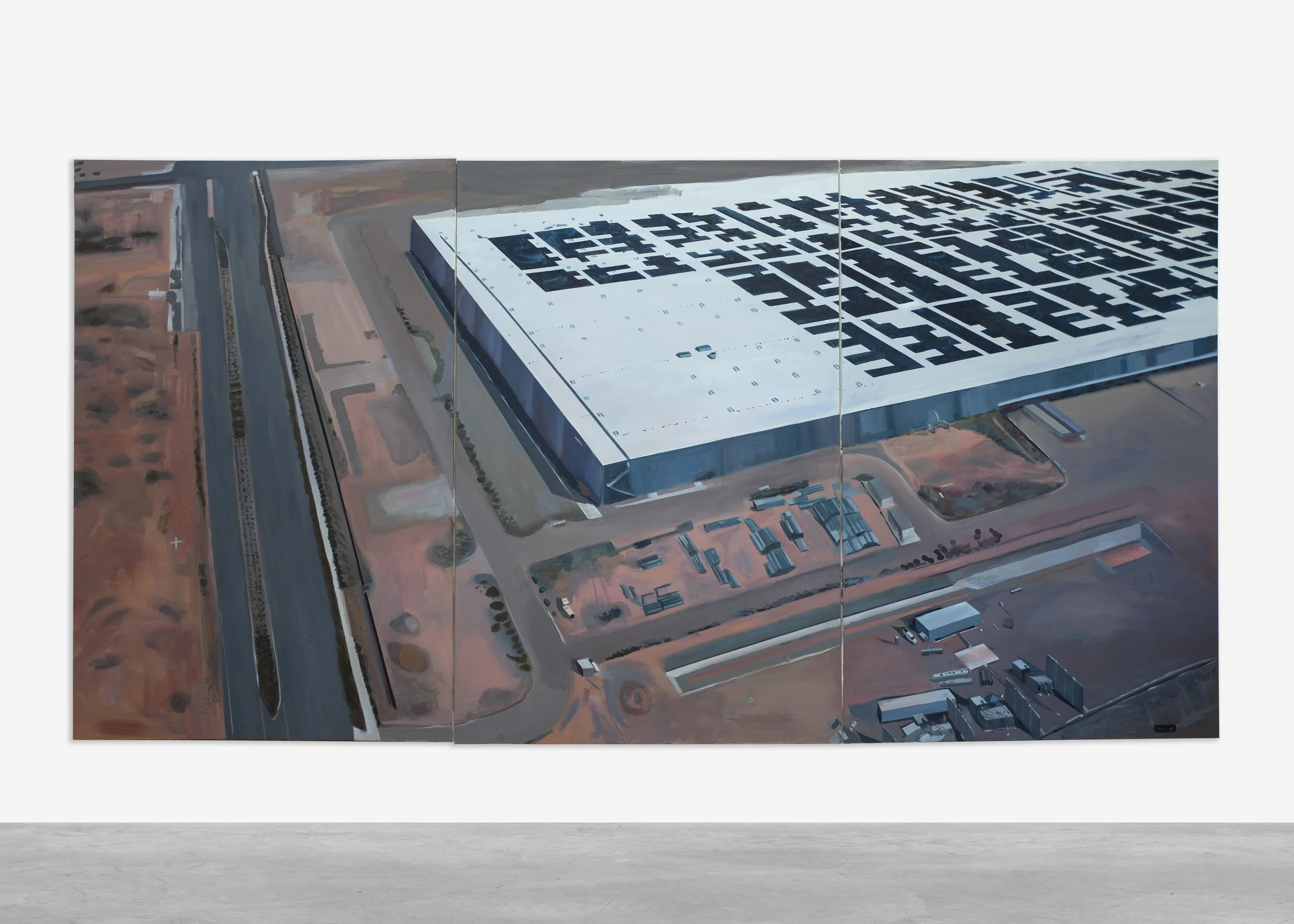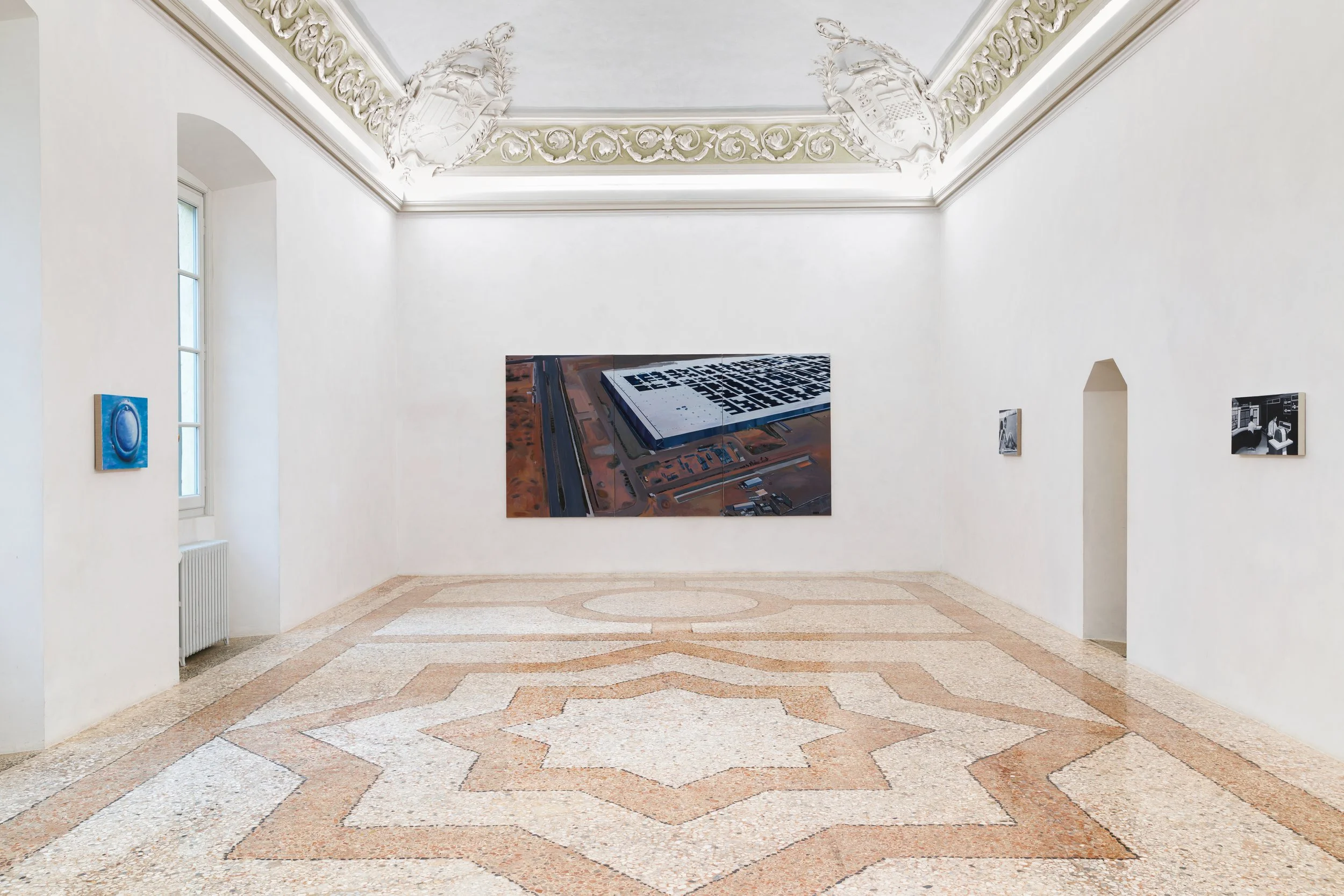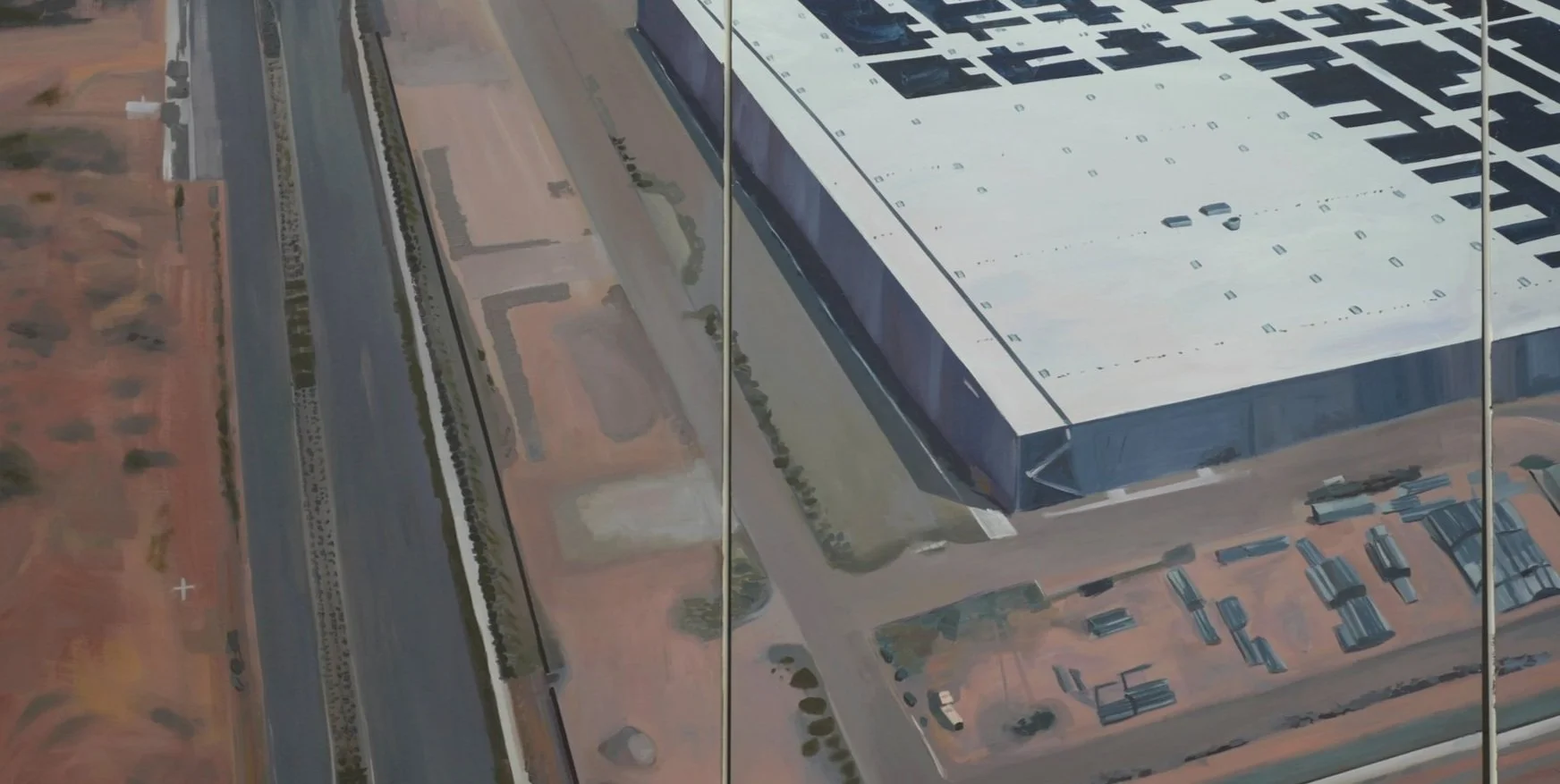Memory, 2019
Memory, 2019
Oil on linen
In three parts, each: 183 x 122 cm (72 x 48 in)
Overall: 183 x 366 cm (72 x 144 in)
Signal, May 5 – June 10, 2022, Peres Projects, Milan
Signal, May 5 – June 10, 2022, Peres Projects, Milan
Signal, May 5 – June 10, 2022, Peres Projects, Milan
Memory (2019) presents a satellite view of the Mesa Data Center in Arizona, a facility housing data from global applications such as iMessage and iCloud. Powered by numerous solar panels to process vast amounts of information, the data center embodies a growing, externalized vessel of memory as more individuals entrust their personal and collective memory to digital devices. In this poignant work, Tan Mu explores the profound shifts in our understanding of history, time, and identity. The monumental painting captures the paradox of our digital era: our most intimate memories are encoded, uploaded, and stored in the vast physical expanses of remote data centers. Juxtaposing intimacy with infinity, Memory softly narrates stories of interconnectedness and disconnection, love and isolation in the digital age.
Q: What inspired you to create Memory?
Tan Mu: My focus on memory and satellite imagery inspired the creation of Memory. Certain memories, fragmented or lost due to trauma, made me realize my subconscious tendency to explore themes of externalized and collective memory in my work. These personal motivations—an effort to transform disconnection into new connections—drive my artistic practice. Memory is a painting that examines the concept of externalized memory. By uploading personal information and data to data centers, individuals contribute to these facilities becoming physical vessels for humanity’s collective memory. The work invites reflection on how human thoughts, emotions, and shared experiences are embedded within the physical and digital structures we create, as well as humanity’s innate desire to connect, document, and transcend boundaries.
Q: How does externalizing memory into data centers influence our understanding of memory?
Tan Mu: This transformation fundamentally changes how we store, share, and transmit personal and collective memory, while also reshaping our understanding of the fabric of memory. At its core, memory is the process of encoding, storing, and retrieving information. Our experiences and sensory data are collected, encoded, stored, and later accessed through recall—a process that takes place internally within the brain. Data centers, by contrast, serve as an externalized memory system with striking similarities to our own. Just as the brain stores memories, data centers store users’ information, functioning as repositories of collective memory. Data is encoded in digital formats and saved on devices within these centers, mirroring the brain’s process of encoding and storing memory. Users access this data via the internet, akin to how we retrieve memories from our minds. Both systems share the concept of “imperfect memory”—data centers may experience loss or corruption of information, just as our memories can fade or distort over time due to trauma or the passage of years.
This interplay between internal and external memory forms the foundation of my exploration of the fabric of memory. Through painting, I weave these two forms of memory together, examining their fragility and dynamism, and delving into the processes by which information is constructed, stored, and transmitted on both biological and technological levels.
Q: How does the concept of "The Fabric of Memory" manifest in your work, and how is it connected to your subsequent creations?
Tan Mu: I've been deeply immersed in the concept of "The Fabric of Memory," which examines the significant impact of technology on our methods of preserving, distorting, and recalling memories. As we increasingly delegate our personal and collective remembrances to digital devices. Forming an expanded body. Our perceptions of history, time, and identity are profoundly altered. This shift fundamentally changes the way we store, share, and transmit both personal and collective memories. Within this framework, the interconnections and collaborations between individuals weave together, creating a complex tapestry that constitutes a vast network of deep connections, achieved through both synthetic and biological means.This network encompasses everything from external memories, such as circuits (Logic Circuit, 2022), submarine cables (Twenty Thousand Leagues Under the Seas, 2023; Signal: Submarine Networks 01, 2024), and data centers (Memory, 2019), to internal memories, such as synapses and neurotransmitters (Synapse, 2023), neural pathways (Emergence, 2022; Emergence 2, 3, 2024), and the brain (MRI, 2021). These works delve into this intricate phenomenon through the exploration of points, lines, and volume, presenting a visual narrative that blends historical elements with personal experiences in the digital era. It uncovers the complex patterns within memory's evolving fabric, encouraging viewers to reflect on the subtle dynamics in between.
Q: What role do data centers play within information systems?
Tan Mu: When I painted the data center, I viewed it as a transformation in the way information is stored. I saw it as a new type of plate in an information system, a medium that carries the transmission and dissemination of information. This concept relates to the "plate" in printmaking, one of the most influential courses I took in my university studies in expanded media. The core idea of printmaking is the "process," especially characteristics such as layering and duplication. The development of printmaking history mirrors the evolution of communication mediums, representing not only a transformation in art but also a revolution in information carriers. With the advent of digital media, the concept of printmaking has extended into a new era, where the duplication and spread of files and online content continue the essence of printmaking's "multiplicative reproduction." Data centers serve as this new type of plate within information systems, where information and technology are recorded and disseminated. In this particular painting, I chose to depict the data center from a satellite view, presenting it as a flat plate within a vast landscape, symbolizing a crystallization of human history, civilization, and collective memory.
Q: What visual language do you use to depict data centers, and what is the significance of painting these physical technological structures?
Tan Mu: In terms of composition, I use a satellite perspective, as I believe that when our view is elevated above the horizon, we create an atmosphere of tranquility and introspection. This elevated viewpoint allows us to examine and explore the broader significance of a subject, revealing hidden complexities. Just like how the data center in this painting is presented as a flat data carrier plate within the composition, it invites us to explore its function as an information carrier and its role in human memory. My visual language maintains a balance between abstraction and representation, exploring the physicality of materials and memory. In this work, I use relatively representational visual language to emphasize the importance of the physical technological equipment of the data center. My artwork is driven by love for humanity, capturing the key moments connected to us and our era. Painting these physical technological structures serves two purposes: on one hand, they act as time stamps for pivotal moments in history; on the other hand, they serve as visual documentation for future archaeology. A painting with weight, size, and texture becomes an externalized, tangible form of memory. Art provides lasting physical evidence for significant moments or figures. I see myself as a "human printer," and by "printing" these memories, I believe they are endowed with eternity and meaning.






